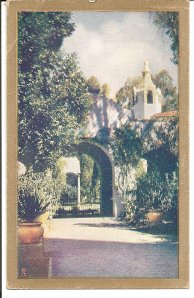 My Grandpa Jim, who was short, energetic, and as a young man, fabulously charming, emigrated from Five-Mile-Town, County Armagh in 1910. Sometime over the next few years, he fetched up in Southern California. Having been trained as something of a specialist – a professional estate gardener, he took employment with an old-moneyed California family and spent the following five decades as their old family retainer, keeping the grounds of their estate up to par.
My Grandpa Jim, who was short, energetic, and as a young man, fabulously charming, emigrated from Five-Mile-Town, County Armagh in 1910. Sometime over the next few years, he fetched up in Southern California. Having been trained as something of a specialist – a professional estate gardener, he took employment with an old-moneyed California family and spent the following five decades as their old family retainer, keeping the grounds of their estate up to par.
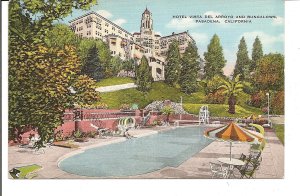 (Right – Hotel Vista Del Arroyo, Pasadena California)
(Right – Hotel Vista Del Arroyo, Pasadena California)
He was mildly renowned in the neighborhood where he lived, with Granny Jessie and his two children- my mother and her older brother, Jimmy-Junior – for not only having been employed during the Depression, but for having held on to the same employer from one end of it to the other. 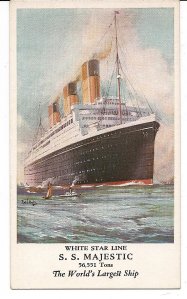
(SS Majestic – back in the day)
I was rather vaguely aware of this employer’s family, as I grew up: when we drove from Sunland-Tujunga to Pasadena to visit my grandparents’ house, on South Lotus St., Mom was often given to pointing out their old original mansion – a grey neo-Gothic style roof-peak, rising out of the trees lining the edge of the Arroyo Seco, as she drove the old green Plymouth station-wagon over the bridge. That was where the senior B – ‘s had lived throughout the Twenties, the Thirties – and a good way into the Sixties. Grandpa Jim was rather feudally devoted to the senior lady of the house, always referred to as Old Mrs. B , to differentiate from the wife of her oldest son, Young Mrs. B. Old Mrs. B. loved roses, the nurturing of which Grandpa Jim was most particularly skilled.
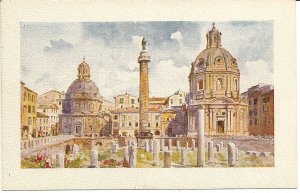 (Roman Forum with Trajan’s Column)
(Roman Forum with Trajan’s Column)
Besides the oldest son, there was a sister and another brother, and a much younger boy whose name was Mark, called Markie, who happened to be very close to my mother’s age. She was born in 1930 – but Markie was delicate, an invalid, with health problems so chronic that he died as a teenager. He was never well enough to go to school or to participate very much in life as his parents and sibs lived it; and my mother was frequently imported to be his companion.
I’ve often thought it must have been rather like the children in The Secret Garden – except that Markie was treasured by both his parents, and Mom was not an orphan. Still, there was something rather Old World about it all – the gardener’s daughter being brought to the enormous grey manor-house, to play with the invalid little boy of an afternoon. Old Mrs. B. loved shopping, loved to buy dresses for little girls, and Mom was the beneficiary of this impulse – except that Old Mrs. B never thought to buy practical things, and so Mom had the prettiest and most lavish dresses – but only ragged underwear, to wear underneath.
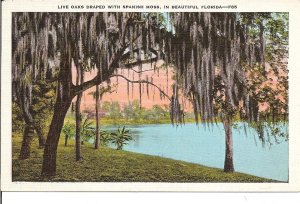 (Scenic oak trees and hanging moss, Florida)
(Scenic oak trees and hanging moss, Florida)
I was, I think, about nine or ten – which would put this happening in the mid-60s – when the old B. mansion was closed up and sold. Young Mr. B and his family – maybe to include Old Mr. B – went to live in a grand estate on the outskirts of Santa Barbara. I remember our family going to visit them, and I think I recall me being given a bouquet of flowers to present to a very, very elderly man, but to ten-year-old eyes, everyone fit to receive Social Security appears enormously aged …
(View west from Hotel Cecil, London) 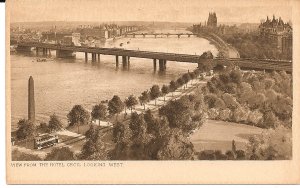
Anyway, there was a day when Grandpa Jim took Mom and I, with my brother J.P. and sister Pippy to the old B. mansion, because there was a bunch of excess stuff in one of the outbuildings, and Grandpa had permission to let us have the pick of it. My mother chose a cast-iron lawn-chair, and regretted for decades that she hadn’t also taken the love-seat that went with it. Both were layered with decades of paint, and as heavy as original sin; it was just that the love-seat was so much heavier than the chair. I don’t remember what J.P. and Pippy came away with – if anything at all – but I came away with a shoebox almost full of old postcards.
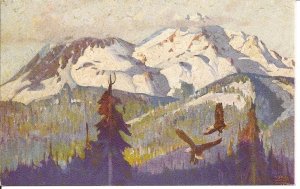 (Mountain scenery, Rocky Mountains)
(Mountain scenery, Rocky Mountains)
They were unused, un-postmarked, un-written upon, and there were heaps of duplicates among them – pictures of hotels, of steamship liners, of views of half a hundred of places as far removed as Japan, and Naples.
There was a collection of views of New Orleans, and of Washington DC, with the streets full of antique-looking cars, and the skies tinted peculiar shades of pink and pale blue. There were postcards that were actually paintings of spectacular scenery in the Far American West, of tree-ferns in Hawaii, and stands of azalea-bushes in Florida, colored in not-quite-natural hues. Taken all together, they offered an entrancing view into another world, another time. They exuded – and still do – a faint and evocative smell of old paper. Some of them were even places that I had seen myself, and a few were of local landmarks; sequoia trees in Northern California, like the Devil’s Gate Dam, a nearly-empty reservoir in La Crescenta, and the old Arroyo Seco Hotel, within eyesight practically, of the B’s mansion.
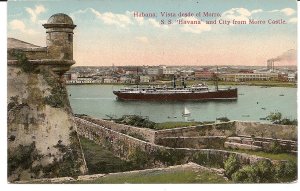 (View of Havana and SS Havana, from Moro Castle)
(View of Havana and SS Havana, from Moro Castle)
The elder B’s and their older children traveled widely, so Grandpa Jim and Mom explained to me, when I showed them the postcards. Mom ventured a guess that perhaps the cards were brought back for Markie, the invalid little boy who was never strong enough to venture much of anywhere. So, his parents, his older brothers and sister, wherever they traveled, by train or steamship, they picked up handfuls of postcards, and brought them home for Markie – although the oldest of them would have predated his birth by a good few years.
Perhaps the senior B’s had made a habit of this all throughout their marriage, and travels. Over all those decades, the postcards had gravitated from across the world to the neo-Gothic mansion on the edge of the Arroyo Seco, tucked into a purse or train-case, perhaps a suitcase with hotel-stickers on it. Going from there to a desk, to a box in a closet with a bunch of other oddments – until the day they came to me.
I’ve had them ever since; maybe the old box of postcards, with their vivid link to a not-quite-out-of-touch past was what set me off on a love of history and travel. Or maybe I would have come to that anyway.
(Tomb of Unknown Soldier, Arlington)

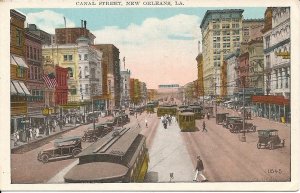
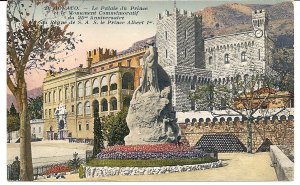
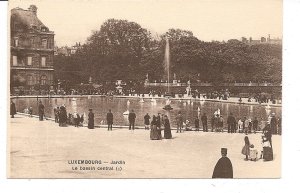
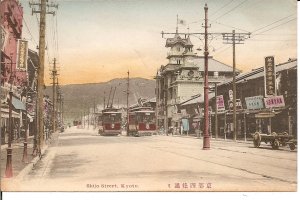
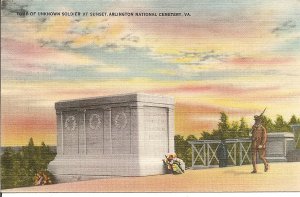


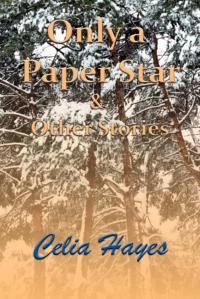 Some of the stories have been ‘published’ in the sense that they were posted on various websites – but here they are collected together in one place. I did not have my brother do this cover image, by the way, since all Kindle needed was just a basic image, so I worked this up myself … eh, maybe I’ll tweak it myself later on.
Some of the stories have been ‘published’ in the sense that they were posted on various websites – but here they are collected together in one place. I did not have my brother do this cover image, by the way, since all Kindle needed was just a basic image, so I worked this up myself … eh, maybe I’ll tweak it myself later on.
Recent Comments